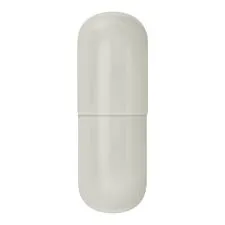
Ноя . 06, 2024 20:35 Back to list
Exploring the Properties and Applications of HPMC in Modern Chemical Industry
Understanding HPMC A Versatile Chemical Compound
Hydroxypropyl methylcellulose (HPMC) is a cellulose-based polymer that has gained significant attention in various industries due to its unique properties and versatility. As a non-ionic, water-soluble thickening agent, HPMC is widely used in food, pharmaceuticals, cosmetics, and construction. This article explores the chemical characteristics of HPMC, its applications, and the advantages it brings to different sectors.
Chemical Structure and Properties
HPMC is derived from cellulose, which is a natural polymer obtained from plant fibers. The modification process involves introducing hydroxypropyl and methoxy groups into the cellulose molecule, which enhances its solubility in water and alters its rheological properties. The degree of substitution and molecular weight of HPMC can be manipulated during production, allowing for tailored properties suited to specific applications.
One of the most notable properties of HPMC is its ability to form viscous solutions or gels when dissolved in water. This ability to thicken and stabilize is particularly valuable in various formulations. Additionally, HPMC is thermally stable, non-toxic, and has a low tendency to form foams, which makes it suitable for formulations where stability is critical.
Applications in Different Industries
1. Food Industry In food products, HPMC is commonly used as a thickening agent, emulsifier, and stabilizer. It helps improve the texture and consistency of sauces, dressings, and baked goods. HPMC also serves as a fat replacer in low-calorie foods, catering to health-conscious consumers. Its capability to retain moisture enhances the shelf-life and quality of various food items.
2. Pharmaceuticals HPMC plays a crucial role in the pharmaceutical industry as a binder, controlled-release agent, and film-forming agent. It is often used in tablet formulations to control drug release rates, ensuring therapeutic efficacy. HPMC’s non-toxic nature contributes to its widespread acceptance in drug formulations, including those for sensitive patient groups.
hpmc chemical

3. Cosmetics and Personal Care In cosmetics, HPMC is employed as a thickening agent and stabilizer in products like creams, lotions, and gels. It enhances product viscosity, improving application properties and feel. HPMC is also used in hair care products to provide conditioning benefits and improve the overall texture of formulations.
4. Construction HPMC is increasingly recognized in the construction industry, particularly in the formulation of cement-based materials, adhesives, and plasters. Its water-retaining properties prevent drying during the curing process, thus enhancing the durability and strength of construction materials. Furthermore, it improves the workability of mixtures, allowing for easier application.
Advantages of HPMC
The benefits of using HPMC span multiple industries. Its non-toxic, biodegradable nature makes it an environmentally friendly option, which is becoming increasingly important in today’s eco-conscious marketplace. Furthermore, the ability to customize its properties by adjusting molecular weight and substitution levels ensures that HPMC can meet the specific needs of diverse applications.
HPMC's compatibility with a wide range of other ingredients allows formulators to create effective and user-friendly products. It also offers stability across various pH levels and temperatures, making it an ideal choice for both long-term and sensitive applications.
Conclusion
In summary, hydroxypropyl methylcellulose (HPMC) is a remarkable chemical compound with properties that are highly beneficial across a plethora of industries. With its versatility as a thickening agent, stabilizer, and binder, HPMC continues to play an integral role in enhancing product quality and performance. As industries evolve and seek more sustainable options, HPMC stands out as a valuable ingredient for future innovations. Whether in food, pharmaceuticals, cosmetics, or construction, HPMC is indeed a compound that deserves recognition for its contributions to modern formulations and products.
-
Unlocking the Benefits of HPMC Products: A Gateway to Versatile Applications
NewsAug.07,2025
-
Unleashing the Potential of HPMC Ashland: A Comprehensive Look
NewsAug.07,2025
-
Tile Bonding Cellulose: The Key to Superior Adhesion and Durability
NewsAug.07,2025
-
Hydroxypropyl Methylcellulose Powder: The Versatile Component in Modern Pharmaceuticals
NewsAug.07,2025
-
Hydroxyethyl Cellulose: The Versatile Solution for Various Industries
NewsAug.07,2025
-
Hydroxyethyl Cellulose (HEC): The Versatile Polymer for Various Applications
NewsAug.07,2025







